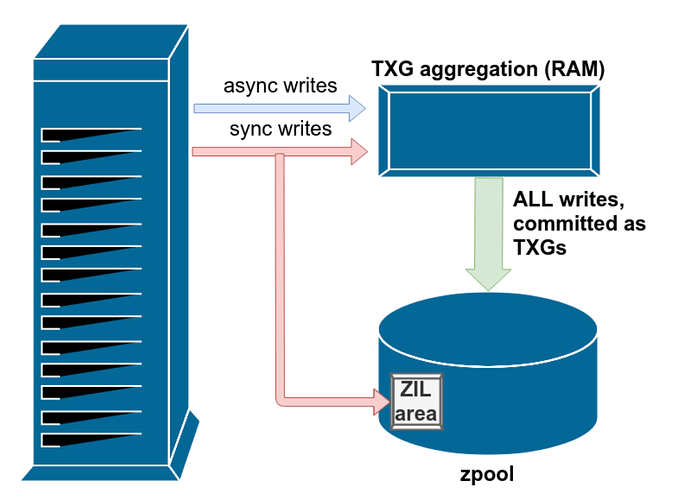I assume pools composed of mirror VDEVs are still copy-on-write and therefore maintain a ZIL, right? Therefore, it could benefit from an SLOG. Right?
My Tentative Plan: Upgrading homelab from single TrueNAS SCALE server. Have a new-to-me 12 bay server with 12x identical 4TB SAS HDDs. Using TrueNAS SCALE for general storage and VM storage for a separate XCP-NG server. 25G (maybe 10G) network between XCP-NG and TrueNAS. Have an Optane 900P PCIex4 SSD (280GB) for an SLOG. Thinking about 5x 2-drive mirrors with 2 hot spares – so any two drives can fail, right? I have 4 identical drives on the shelf in caddies. Other pool configs might be 2x 6-drive raidz2 VDEVs or 1x 12-drive raidz2 VDEV. The XCP-NG server is a new-to-me 8-bay with 8x of the same 4TB drives but will use the main truenas for all VM storage, but will run a virtualized TrueNAS (HBA passed through) to manage a back up replica of the main TrueNAS (probly 8x raidz2) . XO would run in a VM on the main truenas scale server. The replica truenas would have slightly more usable space than the main server.
Any advice welcome.
